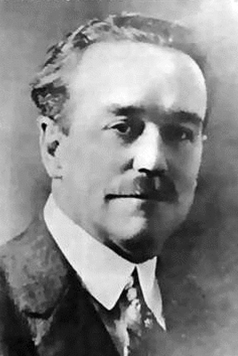The Origins of the Pentecostal Movement

Charles Parham
As a result of this Topeka pentecost, Parham formulated the doctrine that tongues was the “Bible evidence” of the baptism in the Holy Spirit. He also taught that tongues was a supernatural impartation of human languages (xenoglossolalia) for the purpose of world evangelization. Henceforth, he taught, missionaries need not study foreign languages since they would be able to preach in miraculous tongues all over the world. Armed with this new theology, Parham founded a church movement which he called the “Apostolic Faith” and began a whirlwind revival tour of the American middle west to promote his exciting new experience.
It was not until 1906, however, that pentecostalism achieved worldwide attention through the Azusa Street revival in Los Angeles led by the African-American preacher William Joseph Seymour. He learned about the tongues-attested baptism in a Bible School that Parham conducted in Houston, Texas in 1905. He was invited to pastor a Black holiness church in Los Angeles in 1906. Seymour opened the historic meeting in April, 1906 in a former African Methodist Episcopal (AME) church building at 312 Azusa Street in downtown Los Angeles.
What happened at Azusa Street has fascinated church historians for decades and has yet to be fully understood and explained. For over three years, the Azusa Street “Apostolic Faith mission” conducted three services a day, seven days a week, where thousands of seekers received the tongues baptism. Word of the revival was spread abroad through The Apostolic Faith, a paper that Seymour sent free of charge to some 50,000 subscribers. From Azusa Street pentecostalism spread rapidly around the world and began its advance toward becoming a major force in Christendom.
The admixture of tongues and other charisms with Black music and worship styles created a new and indigenous form of pentecostalism that was to prove extremely attractive to disinherited and deprived people, both in America and other nations of the world.
The interracial aspects of the movement in Los Angeles was a striking exception to the racism and segregation of the times. The phenomenon of Blacks and Whites worshipping together under a Black pastor seemed incredible to many observers. The ethos of the meeting was captured by Frank Bartleman, a White Azusa participant, when he said of Azusa Street, “The color line was washed away in the blood.” Indeed, people from all the ethnic minorities of Los Angeles, a city which Bartleman called “the American Jerusalem,” were represented at Azusa Street.
Category: Church History, Fall 2000


